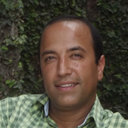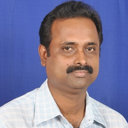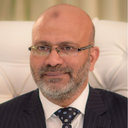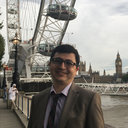What Academicians think about Plagiarism

Danilo Correa Silva
As far as I know plagiarism is not acceptable in any percentage. I think it is important to say, as everyone should know, that direct citations are not plagiarism, of course they must obey some distinct rules of presentation/format.

Elisabeth Margaretha Bik
AI would say that for academic papers, not counting references or methods (parts of which can often be very similar to what has already been published in other papers) about 10% is acceptable.
Some sentences that are definitions(e.g. the definition of innate immunity or apoptosis) are of course reused many times, and plagiarism in those sentences is hard to avoid, but commonly accepted.

Dean Whitehead
The act of 'actual' plagiarism is intentional - so that is an authors' known cheating, stealing and appropriation of other people's work without acknowledgment to the original source and passing it off as their own‘. It is a contentious ethical issue and one that is difficult to police, prove and discipline for. University policy is variable between institutions.
Most authors will plead 'unintentional plagiarism' - and that is probably more acceptable with students and assignments - than with academic staff and their publications.
Some 'authors' believe that the more they cite - the more praise they will receive. I'm often asked by students 'how many citations should I include?'. I usually retort 'how long is a piece of string; it's not about the quantity it's far more about the quality'.
For those that ignore this and continue to over - cite, I have a catch - phrase that I usually use to, hopefully, impact - and that is 'in many cases less is more‘.

Ramesh Pandita
Though softwares are there to help us, but ultimately it is only the subject expert who can help us to form opinion about the content detected as whether it is plagiarized or not...
Plagiarism is Plagiarism be it 1% or beyond but the fine line is to be drawn about the content what we may refer as plagiarized and what we may not even after detection...
We can't put in place a mechanism whereby we may advocate a certain percentage of plagiarism acceptable, especially when there is no objective method of judging & analysing the content, except human intervention, whereby content with 1% plagiarism may be rejected as a stolen content, while as on the other hand content with much larger percentage of plagiarism may not face such serious criticism.

Phil Cully
The endorsement of rote learning techniques at early stages within many of our educational systems implants a sense that not only is it acceptable to copy and paste but that such is actually endorsed and accredited as legitimate self - learning. Changing this ingrained conviction, in students new to tertiary level education, presents as one of the greatest difficulties that needs to be overcome if plagiarism avoidance is to become the norm.
The student first needs to be educated as to the broad range of unacceptable activities that constitute it. Only then can penalty for violation be justly be considered.
An abundance of direct quotes not only amounts to laziness but could be construed as patchwork plagiarism.
The ability to paraphrase is one that must be nurtured - it displays a depth of understanding of the topic.

Ian Kennedy
Only zero plagiarising is acceptable.
... Is there such a thing as a half - crime? Percentages are put out by "plagiarism detection programs" to make the programs seem needed and scientific ...
...Therefore educate your students beforehand about how to reference. It's a mechanical process that anybody can learn. It's really that easy. Make an example of the first plagiariser you catch . It won't happen again...
Concept of fair use? Use an idea, acknowledge it. Simple
There is a big difference between quoting without referencing and quoting with correct referencing. This is the difference between plagiarising and not plagiarising.
Smart plagiarism checkers must look to see if
- the text is copied from anywhere. If so
- is it copied verbatim? If so,
- is it referenced correctly? If not, flag plagiarism...

Sumeer Gul
Professional cheating - plagiarism can't be accepted in any way. However, acknowledgements given duly to the works can have a concept of fair use. But again the question arises, acknowledgement to what extent?

Barry Turner
Plagiarism is dishonesty and we should not allow little bits of theft or small quantities of fraud.
We should perhaps be not so zealous about simple errors in referencing and be careful that similarity, which is inevitable is properly examined.
However where there is a definite 'lift' of the work of others it should be treated the same way other dishonesty is and punished.
If we mean simply thieving the ideas of others it is zero but, and it is a big but, simply reciting the ideas of others is not plagiarism just poor scholarship. Apart from anything else, blind acceptance of the work of others without subjecting them to proper scrutiny and criticism is useless in academic terms. I teach my students to regard all published work with suspicion and scepticism (but not cynicism) no matter how distinguished the author.
The correct position for a scientist is Question Everything!

Christa Van Staden
The % indicatedby Plagiarism Software is similarity and not plagiarism. So you have to check each similar piece of text to decide if it is plagiarism or not. If the text was copied as it is from another source, it is theft and dishonesty and should be treated as such.
When reporting quantitative data, it is a different story. There is a certain way of reporting the data and if you look at the similar text, it shows something like 'a practical significant difference of (data) was found between(one thing) and (other thing) . That is not plagiarism, it is the correct words to be used when reporting such data.

William Murray Thomson
William Murray Thomson University of Otago You need to make a distinction between plagiarism and the legitimate use (and enhancing) of ideas advanced by others - and you need to acknowledge those sources and give them their due in your article. It is when you don't that you cross the line into plagiarism.
There is nothing to stop you using a VERY occasional direct quote either, but cite the original source. Students should use no more than one direct quote in an entire thesis - this forces them to use their judgment and to distill and shape the ideas of others into their own words (while giving due acknowledgment to the source of those ideas). Research is an incremental process which builds gradually on what has gone before.

John J Frey
Another component of this subject is what is called auto - plagiarism, which is very common in tech papers and labs studies where the methods are repeated word for word from another publication by the same group. That is a no, no. The journal owns the words, not the authors.

Trilochan Mishra
It is difficult to say in terms of percentage. But always remember not to use any sentence directly in your review articles even if you site the same. Use your own language to describe the same results. Even in the introduction part try to have your own language.

Alan Holden
Submitting someone’s work as their own...
Taking passages from their own previous work without adding citations...
Re - writing someone’s work without properly citing sources...
Using quotations, but not citing the source...
Interweaving various sources together in the work without citing...
Citing some, but not all passages that should be cited...
Melding together cited and uncited sections of the piece...
Providing proper citations, but fails to change the structure and wording of the borrowed ideas enough...
Inaccurately citing the source...
Relying too heavily on other people’s work...
Fails to bring original thought into the text...
It appears to me that plagiarism can occur in many forms, and they are all wrong at base. However all of this must be taken with careful consideration. So I suppose my current answer is "Zero per cent. But..."

Ahmed Badar
Everyone reading this question has a temptation to say zero. Agreed this is correct up to the "pre plagiarism - software age". Zero is the correct answer from a learned professor who wants his students and associate researchers to be truthful.
The dilemma of alibrarian & a managing editor in the "plagiarism - softwar age" is this that the Artificial intel ligence does not know what is the meaning of "zero tolerance". I am fighting with these software since 2004(when i was also part of a failed software ASME.. Antiplagiarism software for medical editors) Therefore my answer is a little modified "zero".

Prof. Ravi K. Sharma
A review is a review of others' work and could be written in three ways:
- Topic wise, who has done what, in authors own words / lines / paragraphs with due credit to the authors / with citation of source.
- True Analysis / summarization of the work done so far in a particular subject / area or topic with due source citation.
- A mixture of 1 and 2.
To me a reader should be able to get easily understandable, well written, correct & authentic information.

Marius Treutwein
Plagiarism can not always be measured in percent. Habibzahdeh and Shashok differentiate between plagiarism in words and in ideas. It is obviously difficult to decide the percentage of plagiated ideas. Bazdaric cites some papers discussing 5 to 10% or 100 words. They present different tools and methods to detect plagiarism and discuss the importance of plagiarism in the diverse sections of a paper, giving more weight to the results and discussion section than material and methods.

Farhad Shokraneh
Farhad Shokraneh University of Nottingham Plagiarism is unethical and illegal in any percentage except zero. You should write ideas in your own words (Paraphrase). Try not to copy even a small scientific sentence.

Roland Eghoghosoa Akhigbe
The rate/percentage of plagiarism is actually difficult to state. Most plagiarism detection tools pick 'copy and paste' as plagiarized. I suggest that emphasis should be placed on 'The Forms and Prevention of Plagiarism'.
